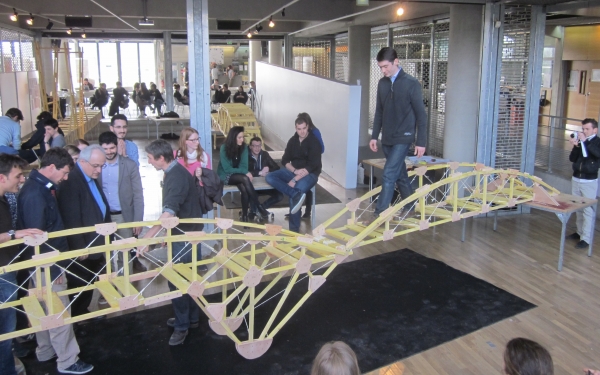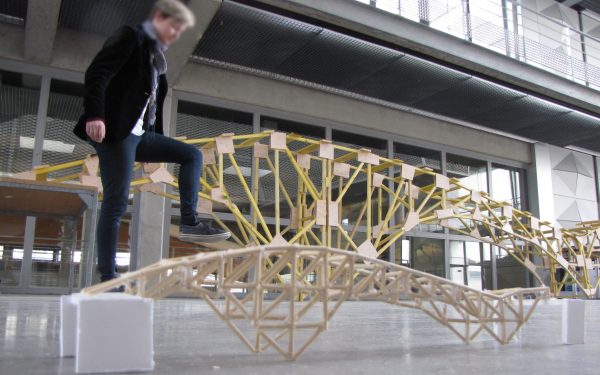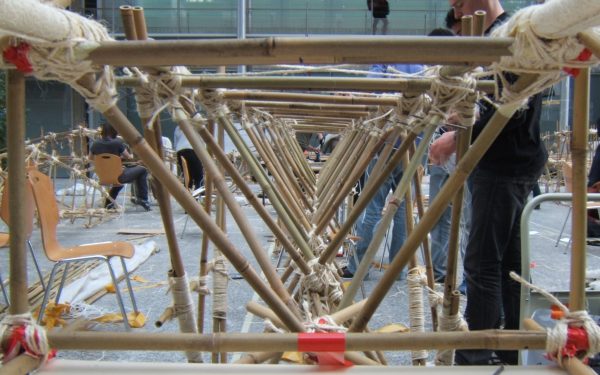@ENPC – March 2015 – C. Douthe, C. Rouby
From design to fabrication in one week. This yearly workshop mixes third year engineering and architecture students. It starts with an introduction to structural mechanics and to bridge design and it ends up with the construction of a 6m footbridge. Students not only get familiar with all the steps of the design process but make the physical experiment with their own body of the full scale realisation of an object that they have conceived. A first experience as builders that most of them will remember.
Detailed constraints
Each group of students has to design and build a bridge over a gap of 7m, which means: not a sculpture but a structure capable of supporting the crossing of a member of the team. The gap is delimited by two main supports consisting of tables with a height of about 0.75m. Between these two supports, the structure can have as many intermediate supports as necessary to the extent that a clearance of 2.8m² is left free below the structure. The minimum width of the deck available for users is 0.5m. There are no special requirements for the slope of the bridge as long as the crossing of the 7m remains possible and as the deck does not go over 1.3m.
For obvious safety reasons, the supervisors and the jury are the only ones able to allow the crossing of the bridge and reserve the right to do pre-loading tests, so that each bridge must be able to withstand a load of 100kg placed in any point. To support the different loads, it is permitted to use some team members to weight the abutments which must be managed accordingly.
Teaching Material
Material at one’s disposal
- 120m of wood (25x27mm)
- 50m of sisal rope
- 500 screws
- 2m² of 5mm plywood
Features of the 2015 edition
For this ninth edition of the workshop, the teaching team had changed partly, but integration was quick and success was there. Indeed, it had been noticed in previous editions that most problems appeared in the connections: if the dimensioning of current members is important, the design of assembling is crucial. Particular attention has thus been paid this year to the design of connections, following recommandations inspired by EC5 (actually, the member sections were to small to enter the framework of EC5). Although students were reluctant to draw every single assembling at a 1:1 scale, at the end they had to admit the results were there: the bridges were more robust than ever. The five could be crossed, but four of them could stand the entire team together (six persons) without significant cracking!
[flickr_set id=”72157651218897259″ max_num_photos=”40″ images_height=”140″]




